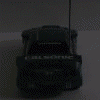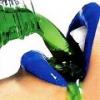LED Parkers
Announcements
-
Similar Content
-
Latest Posts
-
Snapping necks haha
-
lol, get many looks in traffic?
-
Due to series of unfortunate events the 32 is currently my daily. Fuel economy and jungle gym aside it has not been too bad to drive around. That was until the ol' Varex decided that ~15 years and ~8 of those years on E85 was enough. The butterfly valve separated from the motors' shaft and managed to wedge/weld its self in the closed position. the varex when rapped sounded like there wasn't any packing left in it either. New Vibrant 3" muffler was selected to go in. While it is a shame to lose the quiet mode, the new Vibrant muffler definitely gives a more mellow/rounded tone which sounds great. To me it also sounds louder than the varex was open... so there is that. sorry neighbours
-
Down shifting = Right gear, right RPM, right road speed! Try rev matching on the down shift
-
Why would you ever need to "hard change down" from 5th to 4th? Any time you're in 5th and need serious accel, you're looking to go down to 3rd or maybe even 2nd, anyway. Just treat your 30 year old gearbox with some respect.
-







Recommended Posts
Create an account or sign in to comment
You need to be a member in order to leave a comment
Create an account
Sign up for a new account in our community. It's easy!
Register a new accountSign in
Already have an account? Sign in here.
Sign In Now